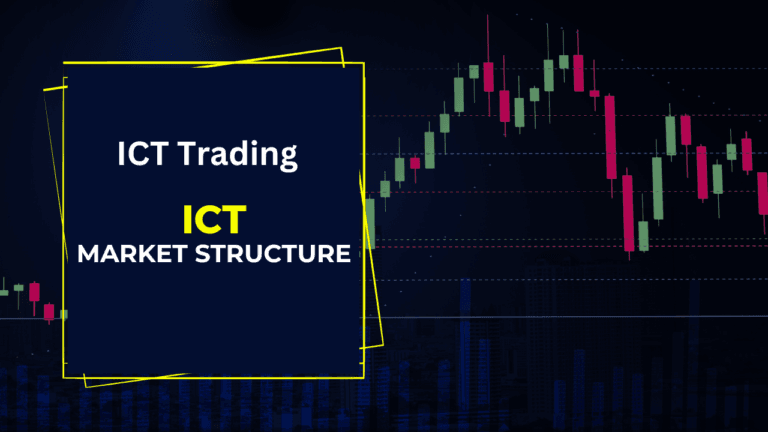ICT Silver Bullet Explained

In the dynamic landscape of trading, strategies that provide clarity and direction are essential for achieving consistent results. One such strategy is the ICT Silver Bullet, a key concept within the Inner Circle Trading (ICT) framework. ICT Silver Bullet Explained This approach simplifies the trading process by focusing on crucial market elements such as market structure, order blocks, and liquidity. By understanding the ICT Silver Bullet, traders can enhance their decision-making skills, improve trade precision, and ultimately increase their chances of success in the financial markets. In this article, we will explore what the ICT Silver Bullet entails and how it can be effectively utilized in trading.
What is the ICT Silver Bullet?
The ICT Silver Bullet refers to a powerful trading strategy used by traders who follow the Inner Circle Trading methodology. At its core, this strategy focuses on identifying high-probability trade setups by analyzing market structures and key price levels. The term “Silver Bullet” suggests a solution that effectively addresses the challenges traders face, offering a straightforward approach to maximizing profits and minimizing risks.
Key Principles of the ICT Silver Bullet
- Market Structure Analysis: The foundation of the ICT Silver Bullet lies in understanding market structure. This involves recognizing trends, support and resistance levels, and the overall flow of price movements. By analyzing these elements, traders can make informed decisions about when to enter or exit a trade.
- Order Blocks: Another critical aspect of the Silver Bullet strategy is the identification of order blocks. These are areas where significant buying or selling has occurred, leading to a shift in market direction. By pinpointing these zones, traders can determine potential reversal points and capitalize on market movements.
- Liquidity: The ICT Silver Bullet emphasizes the importance of liquidity in trading. Understanding where liquidity resides in the market allows traders to anticipate potential price movements and make strategic trades that align with market behavior.
The Importance of the ICT Silver Bullet
The ICT Silver Bullet is not just a trading strategy; it is a comprehensive approach that empowers traders to make better decisions. By focusing on market structure, order blocks, and liquidity, traders can:
- Enhance Trading Precision: With a clear understanding of market dynamics, traders can enter and exit positions more effectively, improving their overall success rate.
- Reduce Emotional Trading: A well-defined strategy helps eliminate impulsive decisions driven by emotions. Instead, traders rely on a systematic approach, increasing their chances of profitability.
- Adapt to Market Conditions: The Silver Bullet strategy is versatile, allowing traders to adjust their approach based on changing market conditions. This adaptability is crucial for long-term success in trading.
In summary, the ICT Silver Bullet is a vital tool for traders within the Inner Circle Trading framework. By mastering its principles and components, traders can navigate the complexities of the market with confidence and clarity.
Key Components of the ICT Silver Bullet
To fully grasp the ICT Silver Bullet, it is essential to understand its key components, which work together to create a robust trading strategy. These components include market structure, order blocks, and liquidity.
Market Structure
Market structure is the backbone of the ICT Silver Bullet strategy. It involves analyzing the price movements to determine whether the market is trending upwards, downwards, or moving sideways.
- Higher Highs and Higher Lows: In an uptrend, the price makes higher highs and higher lows, indicating strong buying interest. Identifying these patterns helps traders know when to enter a position in the direction of the trend.
- Lower Highs and Lower Lows: Conversely, in a downtrend, the price makes lower highs and lower lows, suggesting selling pressure. Recognizing these patterns allows traders to capitalize on downward movements.
- Range Bound Markets: In sideways markets, the price oscillates between defined support and resistance levels. By understanding market structure, traders can anticipate breakouts or reversals, enhancing their trading decisions.
Order Blocks
Order blocks are crucial for identifying potential reversal points in the market. These blocks are formed when institutional traders place significant buy or sell orders, leading to a noticeable shift in price.
- Identifying Order Blocks: Traders can spot order blocks by looking for strong price movements accompanied by increased volume. These areas often serve as key support or resistance levels.
- Trading Opportunities: When the price approaches an order block, traders can look for signs of a reversal or continuation. Entering trades at these points can yield high-risk rewards, as the price often reacts strongly to these levels.
Liquidity
Liquidity refers to the ease with which assets can be bought or sold in the market without causing significant price changes. Understanding liquidity is vital for successful trading.
- Liquidity Zones: Traders should identify areas with high liquidity, as these zones often coincide with significant price movements. By entering trades in these zones, traders can benefit from swift price action.
- Avoiding Low Liquidity Situations: Trading during periods of low liquidity can lead to increased volatility and slippage. By being aware of liquidity conditions, traders can avoid unfavorable trading environments.
How to Use the ICT Silver Bullet in Trading
Implementing the ICT Silver Bullet strategy requires a systematic approach that involves analyzing market conditions, identifying key levels, and executing trades effectively. Here’s a step-by-step guide on how to use the ICT Silver Bullet in your trading.
Analyze Market Structure
Begin by assessing the current market structure to determine the overall trend. Use chart patterns, trend lines, and technical indicators to identify:
- Whether the market is in an uptrend, downtrend, or range-bound phase.
- Key levels of support and resistance that can influence future price movements.
Identify Order Blocks
Next, look for order blocks on the chart. Focus on areas where significant price movements occurred, indicating strong buying or selling interest. Follow these steps:
- Draw horizontal lines at the top and bottom of the order blocks to visualize key support and resistance levels.
- Monitor price action as it approaches these order blocks for potential trading opportunities.
Monitor Liquidity
Before executing any trade, assess the liquidity conditions of the market. Here’s how to do that:
- Check the economic calendar for high-impact news events that can affect liquidity.
- Analyze volume indicators to ensure you are trading in high-liquidity environments.
Set Entry and Exit Points
Once you have analyzed the market structure, identified order blocks, and monitored liquidity, it’s time to set your entry and exit points:
- Entry Point: Plan your entry near an order block where you expect a price reaction.
- Stop-Loss: Always set a stop-loss order slightly below the order block to limit potential losses.
- Take-Profit: Determine your take-profit level based on the next significant support or resistance level.
Manage Risk and Review Trades
Effective risk management is crucial for long-term success. Consider the following:
- Never risk more than a small percentage of your trading capital on a single trade.
- Review your trades regularly to understand what works and what doesn’t, allowing you to refine your approach.
Advantages of the ICT Silver Bullet
The ICT Silver Bullet strategy offers a range of advantages for traders, particularly those seeking to sharpen their trading edge. By mastering its principles, traders can significantly enhance their ability to navigate the markets and improve their profitability. Here are some key benefits of using the ICT Silver Bullet:
Enhanced Precision in Trade Entries
The ICT Silver Bullet helps traders pinpoint optimal trade entry points by focusing on the alignment of market structure, order blocks, and liquidity. This precision reduces the likelihood of false entries and increases the chances of catching high-probability setups.
- By identifying key levels like order blocks and liquidity zones, traders can enter the market at points where the price is most likely to react.
- The strategy promotes entering trades in line with the prevailing trend, reducing the risk of counter-trend trades, which are typically more challenging to manage.
Simplified Decision-Making Process
One of the greatest strengths of the ICT Silver Bullet is its ability to simplify the often complex decision-making process in trading.
- Rather than relying on multiple indicators and conflicting signals, this strategy focuses on the core elements of price action and market structure.
- By using a systematic approach, traders can avoid the confusion that often arises from information overload, enabling them to make clear, objective decisions.
Risk Management and Controlled Losses
Effective risk management is critical for long-term trading success, and the ICT Silver Bullet emphasizes the importance of setting proper stop-loss levels and managing risk per trade.
- The strategy promotes entering trades near key levels, allowing traders to place tight stop-loss orders, thereby reducing potential losses if the market moves against their position.
- With a well-defined risk-to-reward ratio, traders can limit their losses while targeting significant profits, ensuring a positive outcome over the long term.
Adaptability Across Market Conditions
The ICT Silver Bullet is highly adaptable and works across various market conditions—whether the market is trending, consolidating, or undergoing volatility.
- This flexibility allows traders to apply the strategy in different asset classes, including forex, commodities, stocks, and cryptocurrencies.
- Since the strategy is based on understanding market behavior rather than specific market conditions, traders can adjust their execution according to the evolving price action.
Improved Confidence and Discipline
By using the ICT Silver Bullet, traders develop a disciplined trading approach. This strategy encourages traders to focus on data-driven setups, reducing emotional decision-making.
- With a clear set of rules and guidelines, traders can build greater confidence in their trades, which in turn reduces fear and anxiety in the face of market fluctuations.
- Over time, this structured approach fosters a more patient and consistent trading mindset, essential for sustained success in the markets.
Common Mistakes to Avoid
While the ICT Silver Bullet strategy can be highly effective, traders must also be aware of potential pitfalls that can hinder their success. Avoiding these common mistakes can help traders make the most of this strategy.
Overlooking Market Structure
One of the most frequent mistakes traders make is neglecting market structure when applying the ICT Silver Bullet. Failing to accurately identify the overall market trend can lead to poorly timed entries and exits.
- Solution: Always start by analyzing the trend direction and market structure before looking for order blocks or liquidity zones. This will ensure that your trades align with the prevailing market trend.
Entering Trades Too Early
Another common error is entering a trade prematurely, without waiting for confirmation from price action or key levels. Jumping in too soon can expose traders to unnecessary risks.
- Another common error is entering a trade prematurely, without waiting for confirmation from price action or key levels. Jumping in too soon can expose traders to unnecessary risks.
Ignoring Liquidity Conditions
Liquidity is a crucial component of the ICT Silver Bullet, and many traders fail to account for liquidity conditions when entering trades. Trading in low-liquidity markets can result in unpredictable price movements and slippage.
- Solution: Always monitor liquidity by observing volume indicators and avoiding periods of low market activity. Trading during high-liquidity sessions (such as the overlap of major trading sessions in forex) can enhance your trade execution.
Poor Risk Management
Even with a solid strategy, poor risk management can lead to significant losses. Traders often risk too much on a single trade or fail to set proper stop-loss levels.
- Even with a solid strategy, poor risk management can lead to significant losses. Traders often risk too much on a single trade or fail to set proper stop-loss levels.
Lack of Patience and Discipline
Patience is key when using the ICT Silver Bullet. Many traders make the mistake of overtrading or abandoning the strategy during times of drawdown, which leads to emotional trading and increased losses.
- Solution: Stick to the rules of the strategy and avoid the temptation to chase trades. Discipline is crucial for long-term success, so wait for high-quality setups rather than forcing trades.
Conclusion
The ICT Silver Bullet strategy is a highly effective tool within the Inner Circle Trading (ICT) methodology, offering traders a simplified yet powerful approach to the markets. By focusing on market structure, order blocks, and liquidity, this strategy allows traders to make more precise trade entries and manage their risk more effectively. Whether you are a beginner or an experienced trader, the ICT Silver Bullet can help you enhance your trading precision and improve your overall performance in the market.
One of the key advantages of this strategy is its ability to streamline decision-making. Traders no longer need to rely on a multitude of indicators and complex setups; instead, they can focus on core principles that provide a clearer view of price action. This not only improves the accuracy of trade entries but also fosters discipline, patience, and confidence in executing trades.
However, like any strategy, success with the ICT Silver Bullet requires commitment to mastering its components and avoiding common mistakes, such as entering trades too early or ignoring market structure. By applying the strategy consistently and maintaining proper risk management, traders can leverage its potential to achieve consistent profits over time.
In conclusion, the ICT Silver Bullet is an adaptable and powerful strategy that gives traders the edge they need in today’s fast-moving markets. When used correctly, it can significantly increase trading precision, reduce emotional decision-making, and position traders for long-term success.
Read More ICT Daily Bias – A Trader’s Guide
Frequently Asked Questions
What is the ICT Silver Bullet strategy?
The ICT Silver Bullet is a trading strategy developed within the Inner Circle Trading (ICT) framework. It focuses on key components like market structure, order blocks, and liquidity to help traders identify high-probability trade setups. By analyzing these elements, traders can make more informed decisions about when to enter or exit trades, improving their chances of profitability.
How does the ICT Silver Bullet work?
The strategy works by simplifying the decision-making process. Traders first analyze market structure to determine whether the market is trending or range-bound. Then, they identify order blocks where institutional buying or selling has occurred, followed by monitoring liquidity zones for potential price reactions. The goal is to enter trades at key levels where the price is most likely to reverse or continue its movement.
What common mistakes should traders avoid when using the ICT Silver Bullet?
- Ignoring market structure: Always assess the market trend before entering a trade.
- Entering trades too early: Wait for price action confirmation before taking a position.
- Overlooking liquidity: Ensure you are trading in high-liquidity environments to avoid unexpected price movements.
- Poor risk management: Always use proper stop-loss and risk management techniques to protect your capital.
What are the key benefits of using the ICT Silver Bullet strategy?
- Improved trading precision by identifying optimal entry and exit points.
- A simplified decision-making process focused on price action and market structure.
- Better risk management through the use of tight stop-loss orders and clear trade setups.
- The ability to adapt to various market conditions, including trending and range-bound markets.
- Enhanced trading confidence and discipline by following a well-defined strategy.

Hi, I’m Seojin Lee, an experienced trader focusing on the U.S. stock market, particularly NASDAQ and E-mini S&P futures. As a Chartered Financial Analyst (CFA), I apply my knowledge of financial analysis and market strategies to identify profitable opportunities.
I specialize in both short-term and long-term trading, always balancing risk management with market trends. With years of experience, I continuously refine my strategies to adapt to market shifts. If you’re interested in trading insights or strategies, you’ve come to the right place!





